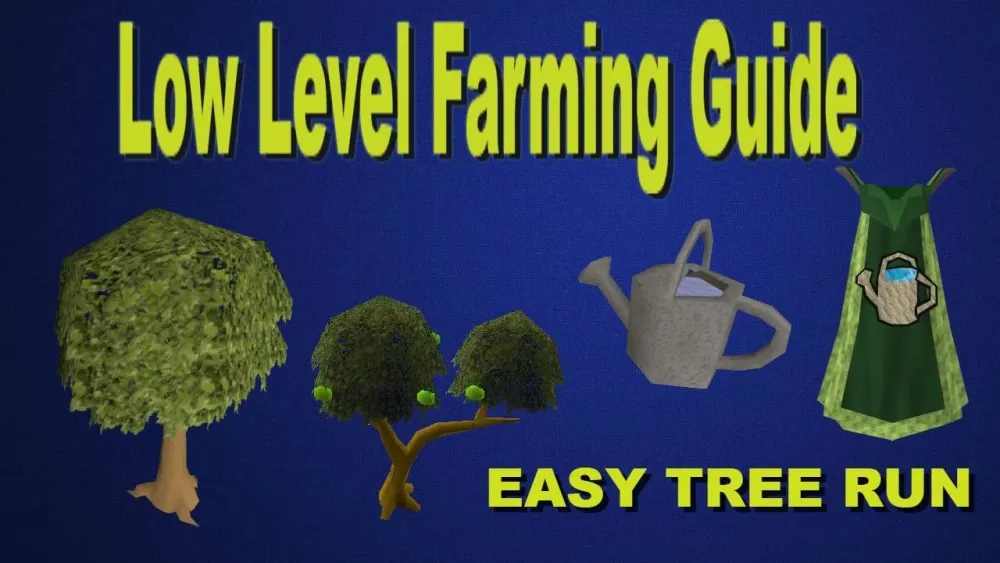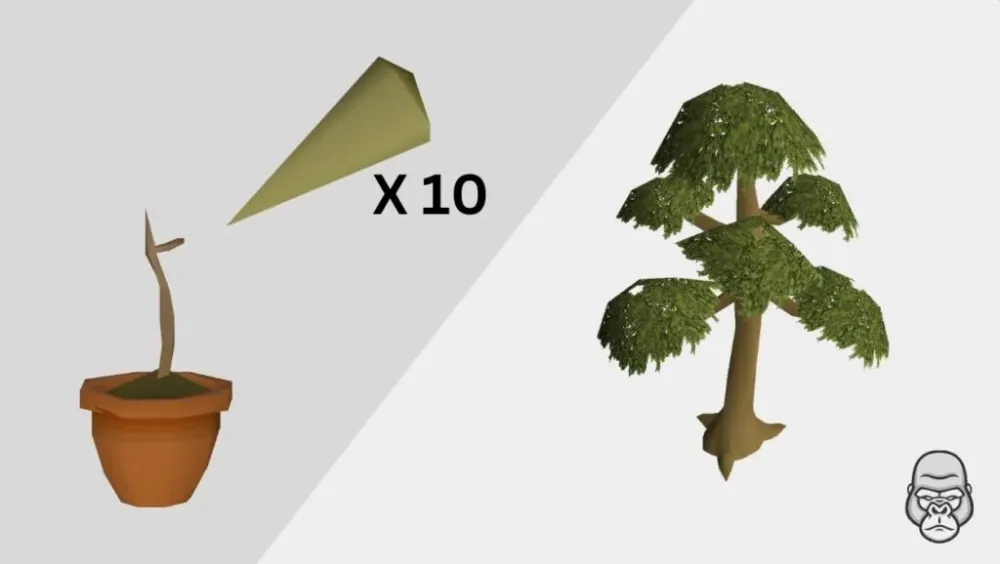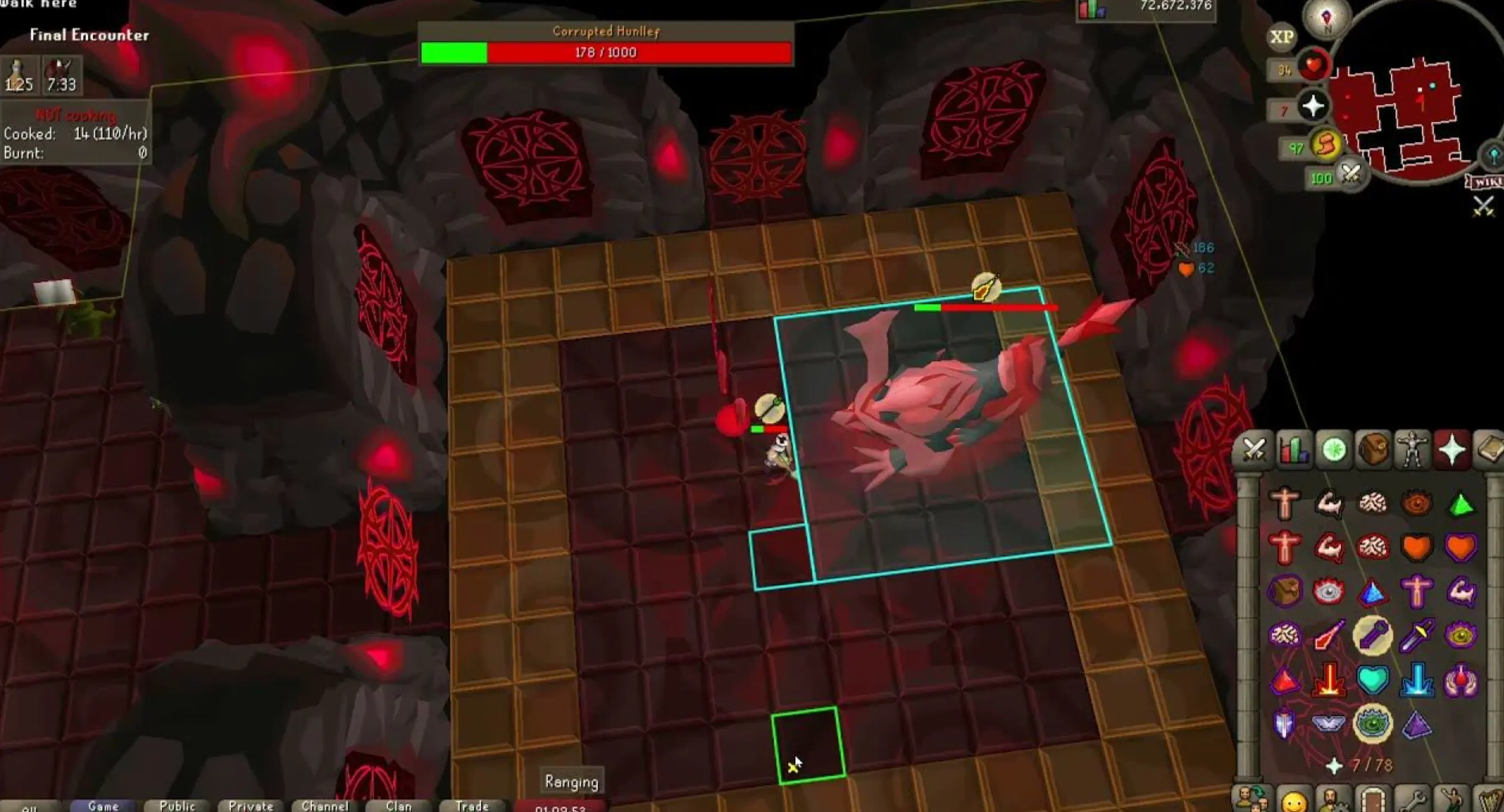Your cart is empty
Ultimate Farming Tree Guide for OSRS

Farming trees in Old School RuneScape (OSRS) is a crucial aspect of the game that allows players to cultivate various trees for resources, experience, and profit. This guide explores the essentials of farming trees, including the different types available, growth cycles, and optimal farming strategies. Understanding the mechanics of tree farming can significantly enhance your gameplay experience, making it a vital skill for both new and experienced players. With the right knowledge and techniques, you can maximize your yields and efficiently contribute to your overall progress in OSRS.
Farming trees in OSRS offers numerous benefits that can greatly enhance your gaming experience and efficiency. Firstly, tree farming provides substantial experience points (XP), which are essential for leveling up your Farming skill. Different trees yield varying amounts of XP, with higher-level trees such as Magic and Yew trees offering the most. By regularly planting and harvesting these trees, players can quickly level up, unlocking access to even more valuable farming resources.
In addition to experience, farming trees is a lucrative method for generating in-game currency. Players can sell logs from harvested trees on the Grand Exchange or use them for crafting, fletching, or firemaking. The demand for logs, especially from high-level trees, ensures that players can profit significantly from their farming efforts. Moreover, tree farming contributes to the production of fruits and other materials that can be used in cooking, potion-making, or completing quests, adding to its versatility.
Another crucial benefit of farming trees is the passive income it generates. By planting trees in various locations, players can establish a routine of logging in to check on their crops, which can be particularly rewarding during busy gaming sessions. This passive approach allows players to engage in other activities while waiting for their trees to grow, making it an efficient use of time.
Furthermore, tree farming enhances the overall gameplay experience by encouraging exploration of the game world. Many of the best farming spots are located in diverse areas, requiring players to travel and discover new locations, which can lead to additional adventures and interactions with other players.
Finally, farming trees contributes to the completion of various achievements and tasks within the game, allowing players to earn rewards and recognition. Engaging in tree farming not only boosts your Farming level but also complements other skills, making it an integral part of the OSRS experience.
3. Types of Trees Available for Farming

When diving into tree farming in Old School RuneScape (OSRS), it’s essential to know the various types of trees you can cultivate. Each tree offers different experience points, growth times, and requirements. Here’s a breakdown of the available trees:
- Regular Trees: These are the most basic trees and include:
- Normal Tree
- Oak Tree
- Willow Tree
- Maple Tree
- Yew Tree
- Magic Tree
- Fruit Trees: These trees not only provide wood but also yield fruits, which can be used for various purposes. Notable fruit trees include:
- Apple Tree
- Banana Tree
- Orange Tree
- Curried Tree
- Palm Tree
- Dragonfruit Tree
- Special Trees: These trees are unique and typically require specific quests or levels to access. Examples are:
- Spirit Tree
- Tree Gnome Stronghold Trees
Each type of tree has its own benefits, so consider your goals—whether you’re after experience, wood, or fruit—when choosing what to plant!
4. How to Start Your Tree Farming Journey
Starting your tree farming journey in OSRS can be both exciting and rewarding. Here’s a step-by-step guide to help you get started:
- Get the Required Tools: Before planting, make sure you have the necessary tools. You’ll need:
- A spade
- Seeds for the trees you want to plant
- Farming level to plant specific types of trees
- Choose Your Location: Decide where you want to plant your trees. Popular farming locations include:
- Plant Your Seeds: Once you’re at the chosen location, dig a hole using your spade and plant your seeds. Remember to check the farming level requirement for each type of tree!
- Water Your Trees: Although trees grow on their own, watering them can speed up the growth process, especially while you’re starting out.
- Check Growth Progress: Regularly check on your trees to monitor their growth. Trees can take anywhere from a few hours to several days to fully mature.
Tree farming is a fantastic way to level up your farming skills and earn some gold. So, grab your tools and get planting!
5. Tree Growth Stages and Requirements
Understanding the growth stages of trees in Old School RuneScape (OSRS) is crucial for maximizing your farming efficiency. Trees in OSRS go through several stages before they can be harvested, and each stage has specific requirements. Let’s break it down:
- Stage 1: Sapling – This is the initial stage when you plant the tree sapling in the ground.
- Stage 2: Growing – After a short period, the sapling will begin to grow. You can’t interact with it yet, but it’s important to keep an eye on it.
- Stage 3: Mature – Once the tree reaches maturity, it’s ready for harvesting. This stage can take several hours, depending on the tree type.
- Stage 4: Decaying – After harvesting, the tree will eventually decay, which means you won’t be able to collect any more logs or leaves from it.
Here’s a quick table of the growth times for different tree types:
| Tree Type | Growth Time | Required Farming Level |
|---|---|---|
| Normal Tree | 16 hours | 1 |
| Oak Tree | 20 hours | 15 |
| Willow Tree | 24 hours | 30 |
| Maple Tree | 28 hours | 45 |
| Yew Tree | 32 hours | 60 |
| Magic Tree | 36 hours | 75 |
Knowing these stages and requirements will help you plan your farming activities efficiently. Make sure to check on your trees regularly for optimal harvesting!
6. Best Practices for Tree Farming
When it comes to tree farming in OSRS, following best practices can significantly improve your yields and efficiency. Here are some key tips to keep in mind:
- Choose Your Trees Wisely – Depending on your farming level, prioritize planting trees that give you the best experience and resources. For example, if you’re at level 15, focus on Oak trees.
- Use Tree Fertilizers – Utilizing super compost or regular compost can enhance the growth rate of your trees. This small investment can save you time in the long run.
- Plan Your Routes – Plant trees in locations that are easily accessible. Use teleportation methods like the Fairy Rings or Teleport to House to save time.
- Monitor Your Trees – Set reminders to check on your trees. If they’re ready for harvesting, don’t delay! The sooner you harvest, the sooner you can replant.
- Utilize Farming Contracts – Engaging in farming contracts can provide valuable rewards and experience. They often encourage you to grow trees you might not have considered.
By adhering to these best practices, you’ll become a more efficient and successful tree farmer in OSRS! Happy farming!
7. Common Issues and Troubleshooting
When it comes to tree farming in Old School RuneScape (OSRS), players often encounter various challenges that can hinder their progress. Here are some common issues and troubleshooting tips to help you maintain a smooth farming experience:
- Tree Disease: One of the most frustrating issues is tree disease. If your trees are diseased, they will not grow properly. To combat this, use Plant Cure, which can be obtained from a herblore or purchased from certain shops.
- Wrong Seed Type: Always double-check that you’re planting the correct type of seed for the tree you want to grow. Using the wrong seed can lead to wasted time and resources.
- Low Farming Level: Some trees require a specific farming level to plant. If you’re unable to plant a tree, check your farming level and consider using experience-boosting items like the Magic Secateurs to gain levels faster.
- Time Management: Trees take a while to grow. Make sure to plant them when you have enough time to return for harvesting. Use a timer or in-game notifications to keep track.
- Competition for Resources: In busy areas, you may find other players competing for the same trees or patches. Consider using less popular locations to avoid overcrowding.
By being aware of these common issues and implementing the appropriate solutions, you can streamline your tree farming activities and maximize your experience points.
8. Advanced Tree Farming Techniques
Once you’ve mastered the basics of tree farming in OSRS, it’s time to elevate your skills with some advanced techniques. Here are some strategies that can significantly enhance your tree farming efficiency:
- Use of the Farming Guild: The Farming Guild offers a range of benefits, including access to higher-level trees and exclusive farming patches. Make sure to join the guild if you meet the requirements.
- Tree Runs: Create a routine of tree runs where you plant and harvest trees in a systematic way. Consider mapping out your route to minimize travel time between patches.
- Utilizing Teleports: Use teleportation methods, such as the Fairy Ring or Teleport to House spells, to quickly reach your farming patches and save time.
- Companion Skills: Combine your farming with other skills, like woodcutting and crafting. The materials you gather can be used for additional profit or experience.
- Tree Spirit Strategy: When planting trees, consider planting ones that spawn tree spirits. These spirits drop valuable items when defeated, adding another layer of profit to your farming.
Implementing these advanced techniques will not only improve your farming efficiency but also allow you to reap greater rewards from your hard work in the game.
Ultimate Farming Tree Guide for OSRS
Farming in Old School RuneScape (OSRS) can be a rewarding skill, allowing players to grow their own food, herbs, and trees. This guide focuses specifically on tree farming, which is one of the most profitable and beneficial aspects of the Farming skill.
Tree farming can yield a significant amount of experience and profit, making it an essential skill for players looking to enhance their gameplay. Below are the key aspects of tree farming in OSRS:
Types of Trees
- Regular Trees: Such as Oak, Willow, and Maple trees.
- Fruit Trees: Including Apple, Banana, and Palm trees.
- Special Trees: Such as Magic trees and Yew trees.
Tree Farming Locations
| Tree Type | Location | Level Required |
|---|---|---|
| Oak | Varrock, Draynor | 15 |
| Willow | Draynor, Barbarian Assault | 30 |
| Maple | Seers’ Village | 45 |
| Yew | Edgeville, Trees near Falador | 60 |
| Magic | Woodland near Tree Gnome Stronghold | 75 |
Best Practices for Tree Farming
To maximize your tree farming efficiency, consider the following tips:
- Always use tree seeds that match your farming level.
- Utilize super compost to increase yield.
- Plant trees near fairy rings for faster transportation.
- Regularly check for tree disease to prevent loss.
In conclusion, mastering tree farming in OSRS can lead to significant experience gains and financial rewards. By understanding the types of trees, optimal locations, and best practices, players can efficiently grow their Farming skill while reaping the benefits of their labor.

